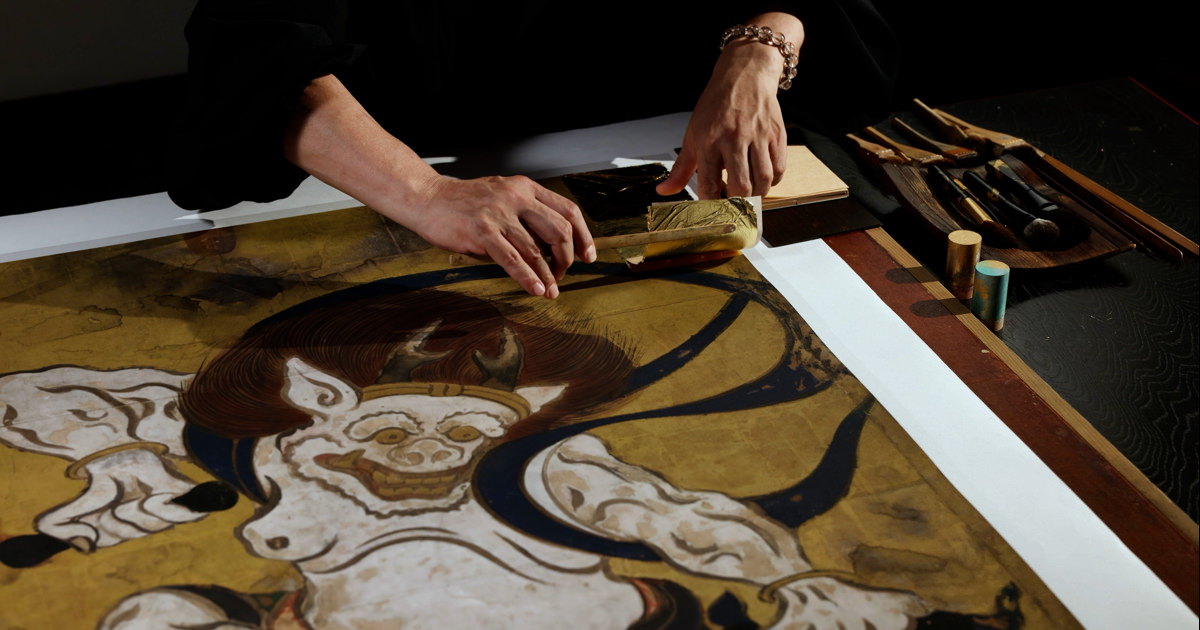Katsushika Hokusai / National Museum of Asian Art, Smithsonian Institution, Freer Collection, Gift of Charles Lang Freer, F1903.52-53
These images are based on the high resolution facsimile produced by the Tsuzuri Project. Unauthorized copying, duplication, or transfer of these images is strictly prohibited.
New Year Customs
High-resolution facsimiles
- Material
- printed on silk
- Period of creation
- Tsuzuri Project Stage 12 2018–2019
- Recipient
- The Sumida Hokusai Museum(Sumida Ward)
Original
- Artist
- Katsushika Hokusai
- Historical era
- Edo (19th century)
- Material
- ink, color on silk
- Medium
- pair of hanging scrolls
- Size
- Each screen H115.6 × W44.1 cm
- Collection
- Smithsonian's National Museum of Asian Art
Description
This work consists of a pair of panels, each depicting how women would greet a New Year. The right-hand panel shows a woman binding a picture of the Seven Gods of Good Fortune riding a treasure ship to her pillow in an attempt to make herself dream an auspicious first dream for the New Year. The left-hand panel shows how a woman collects fresh water in a lacquerware bowl and washes her face on the first morning of a New Year to rid herself of evil spirits for the new year. From the signature and seal applied to it, we presume that Hokusai produced it in his later forties. In 1903, it was exhibited for sale as part of a collection of fine art works offered by the Japanese fine art dealer Hayashi Tadamasa, who promoted the japonisme trend in Europe. Charles Lang Freer then purchased it through the art dealer Siegfried Bing, who similarly introduced Japanese fine arts to a wide range of people in Western countries.




